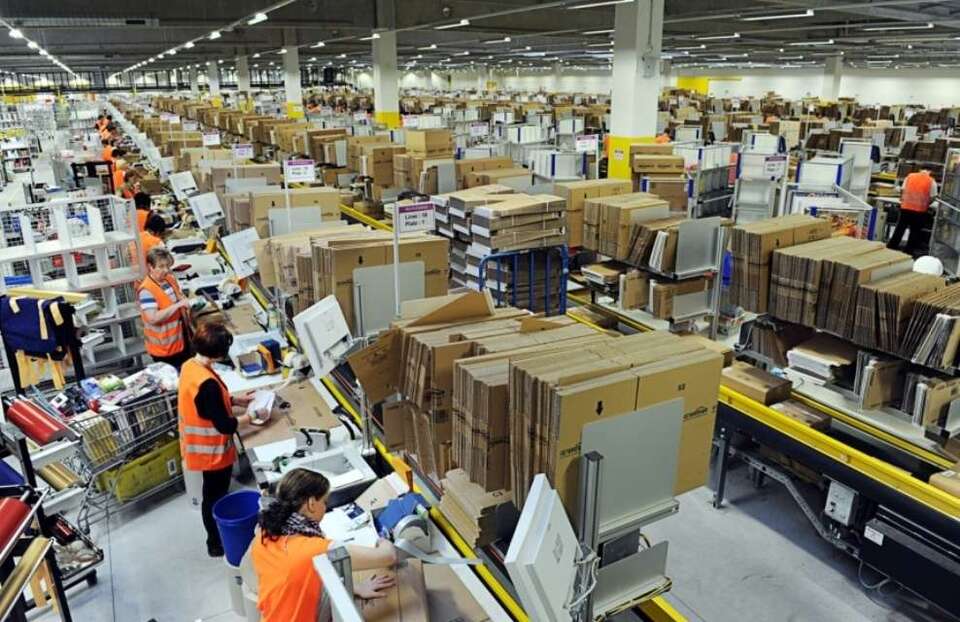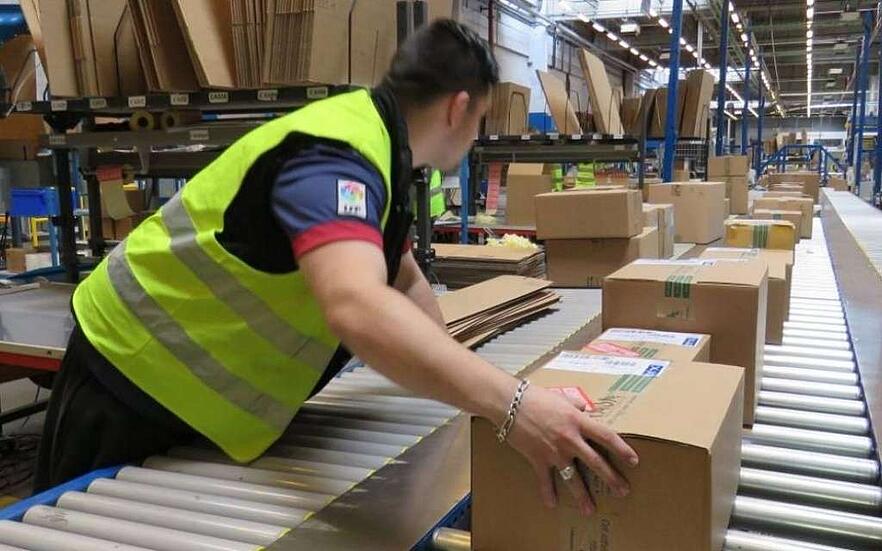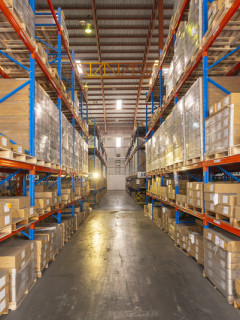Improving the logistics of a warehouse is nowadays an essential factor for all companies. In the same way, you will be able to save time, increasing your productivity and your degree of efficiency. With the continuous growth of e-commerce and the exponential increase in the number of orders being shipped every day, optimal supply chain management and the right choice of warehouse equipment are of paramount importance.
Follow our 10 tips to improve your warehouse logistics:

1. choose the logistics strategy best suited to the needs of your warehouse
A small warehouse, which sends 50 orders a day, does not follow the same strategy as a warehouse that has more than 1 000 daily shipments.
So identify your needs. Evaluate your warehouse and the number of orders it carries out before establishing your logistics strategy:
- Small logistics: for around 50 orders per day. With a team of 5 people and 500 m² of warehouse space, management does not require a particular strategy. Sorting takes place as the order is placed and team members can perform different functions depending on the need.
- Structured logistics: More than 50 orders per day. The warehouse must be as professional as possible and the distribution of products must be very rigorous. Picking must be done by order batch and each team member must have a specific task.
- Industrialised logistics: More than 1,000 orders per day. The warehouse must be automated in order to increase its work rate. The logistics manager must install a WMS (Warehouse Management System), which is warehouse management software to optimise order processing.
- Logistics Outsourcing: This last option is practical, but more expensive. It consists of outsourcing specialised storage logistics from a third party, capable of handling significant peaks of activity.
2. Improve your working environment
- Limit unnecessary travel. Optimise the distribution of products on the shelves to facilitate picking.
- Limit the transport of heavy loads. Equipyour warehouse, for example, with transport trolleys, folding t rolleys or pallet trucks. This way, you will avoid the risk of a work accident and demand much less effort from your employees.
- Investing in quality equipment is also an important aspect of improving your working environment. A high-performance WMS, barcode readers, displays, etc. can make all the difference in making your team members’ work easier and reducing logistical errors.
- Machines also help: packaging machines, filling machines or shrink wrapping machines. Depending on your needs, these types of machines can also greatly speed up your work.
 3. Structure and organise your warehouse space
3. Structure and organise your warehouse space
Good use of space is, above all, essential to avoid turning your warehouse into a battlefield.
Therefore, to structure your warehouse space you should:
- Establish a numbering system for all the products. In addition, create logistic routes that lead you quickly to the desired product.
- Define storage and work zones. Stock areas, storage, picking, arrival and departure, loading and unloading, etc.
4. Specify the tasks of each employee
For example, the more adapted a warehouse is, the more precise will be the tasks to be carried out, by the teams. And if employees have a good knowledge of their tasks, their activity in the warehouse will also be much more efficient.
Distribute the tasks of each person in the different areas of the warehouse.Picking, order preparation, reception, dispatches, packaging, etc.
5. Establish a high turnover stock area
In each warehouse, there are products with more turnover than others . As such, establish a certain zone for the products that are most purchased by your customers. And, therefore, those most handled by your employees as well.
It is also recommended to create a special area for the storage of these products. In other words: an area close to the arrival area and the packaging/shipping area.
6. Organise your products according to their logistics class
In short: to improve the management of your warehouse, you should consider classifying your products according to their specificities:
- Heavy or bulky. For example: requiring technical and delicate handling;
- Fresh;
- Customised. Which go from the storage area to the manufacturing area and end up in the packaging area.
Thus, this organisation will save you a lot of time during your logistics flow (receiving orders, picking and shipping the products).
7. Use the cross-docking technique
Therefore, the aim of cross-docking is for the product to be on your premises for as little time as possible. Cross-docking is a logistics technique where products are unloaded, on arrival at your warehouse, and are also routed directly to the load carrier without passing through the stock. Above all, they ensure that they are not stored.
Cross-docking has many advantages. In short, the longer an item is stored, the more its value decreases and the likelihood of it being damaged, lost or stolen increases.
8. Focus on the preparation of products that are similar
Saving time in picking is very important. For example, if you notice that there are delivery orders for the same product, you will have the advantage of preparing them at the same time. Therefore, you will avoid going back and forth more than once.
 9. Automate the management of stock-outs
9. Automate the management of stock-outs
Above all, managing stock-outs is a big logistical puzzle. As well as causing disruption to your employees’ work, out of stocks leads to great customer dissatisfaction.
For example: when this happens you can activate an automated procedure with your sales and service team. The most common method is to send an automatic email to warn about the next out of stock product.
10. Perform quality control to avoid errors
Customers do not like errors in orders. The challenge of good logistics management is therefore to try to avoid them as much as possible.
In short, with quality control orders are reviewed at each stage. This phase is very important in the logistics process and goes from the arrival of the product, picking, packing and finally to dispatch.
All this control can be done more quickly with a digital format, as it allows checking the quantity and accuracy of the products at the time of packaging.
By following these tips, you can quickly improve the logistics of your warehouse and consequently improve your entire performance.
To do this, it is essential to choose a good carrier . Therefore, it must be able to offer a good follow-up of your orders until the final delivery of the product.
The three main points to remember:
- Organisation is the key word in logistics management. Having a warehouse that is organised according to the real needs of your company is fundamental. The same goes for a specialization of tasks and a quality organization of products, which allows you to save time and efficiency.
- The work environment must be as pleasant and safe as possible. Above all, you must protect the health of your employees.
- Simple tips, such as high-turnover zones, cross-docking and automated out-of-stock management, allow you to better manage your warehouse logistics in the long term.















